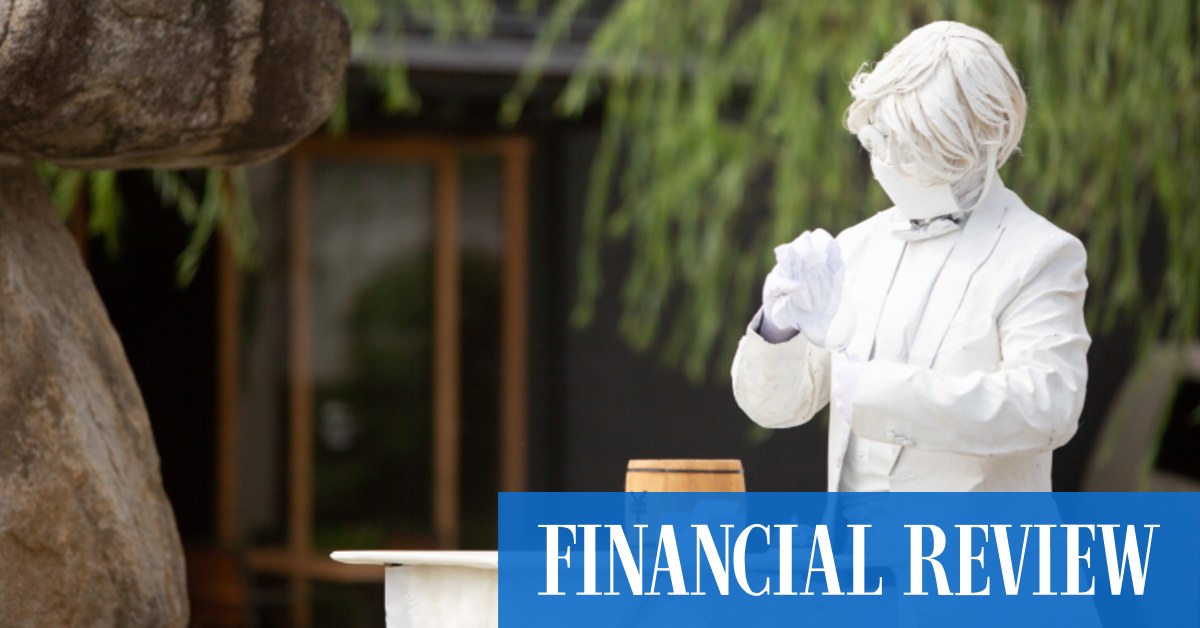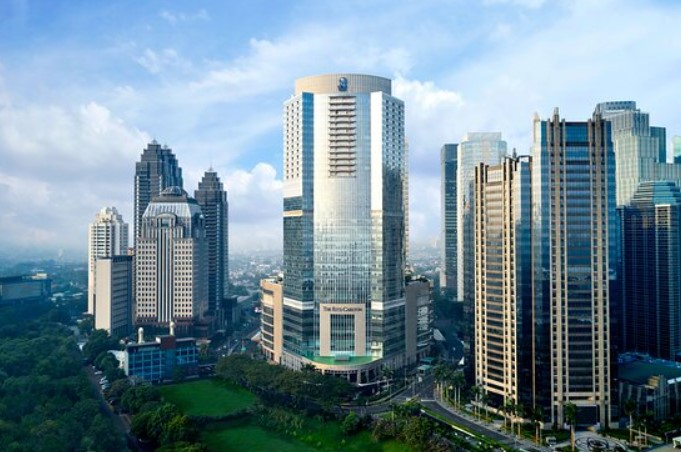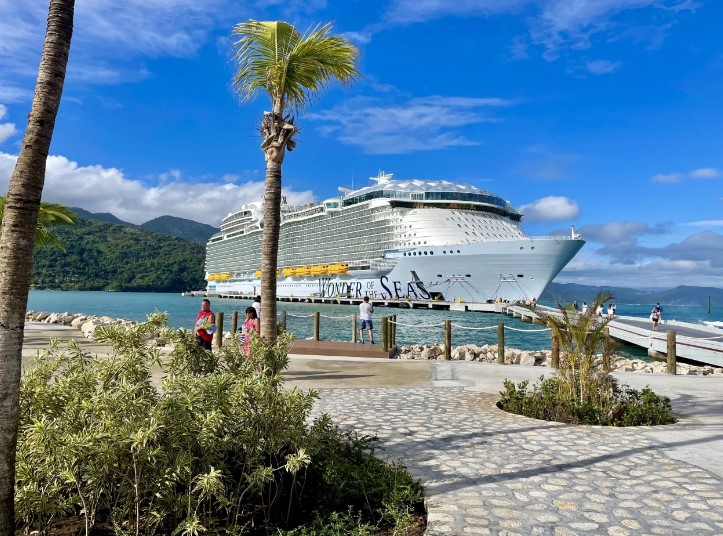The town’s ryokan supply their guests with yukata and geta so you can stroll to your soaking session in style, and all of the onsen welcome guests with tattoos, which are banned in many other Japanese bathhouses.
The thoroughfares linking the onsen have a wonderfully timeless appeal. As you follow the course of the Otani River through the centre of the town, under stone bridges and between ranks of willow and cherry blossom trees arrayed on its banks, the centuries seem to fall away.

Tourists wearing traditional costumes outside a ryokan in Kinosaki Onsen. Getty
Kinosaki Onsen’s commitment to tradition is on display everywhere you look, from the intricate and colourful straw craft that is practised nowhere else in Japan to the local delicacies served up in the restaurants.
At Nishimuraya Honkan where I am staying – a historic ryokan with a warren of spacious rooms enveloped in elaborate gardens and run by the seventh generation of the same family – I get to taste several of them during a superb kaiseki meal (a ritual multi-course offering) at its Sanpou restaurant.
The melt-in-your-mouth Tajima beef (the stock cattle for Kobe beef, known for its rich marbling) is delicious, as are the richly flavoured matsutake mushrooms, found only in pine forests. My only regret is that my visit is too early in the year to enjoy matsuba crab, a local species of snow crab that appears on menus as winter sets in.
Perhaps the most surprising delicacy served during my dinner is kounotori, or stork rice. This mild, slightly sweet-tasting rice is remarkable not for its flavour but for the story behind it: a tale that showcases both the area’s commitment to tradition and its embrace of innovation.
It was in the 1950s that the local population of oriental white storks began to decline dramatically.

The storks had to be bred in a protected space until finally, in 2005, five birds were released into the wild.
With a wingspan of two metres, these imposing birds had long been a symbol of the area – at one stage, tea houses had been built opposite their nesting grounds so that visitors could enjoy the antics of the graceful birds.
But wide-scale deforestation during the war, and the introduction of agricultural chemicals afterwards, caused the birds to become extinct in Japan. The last bird died near Kinosaki Onsen in 1971.
Toyooka City initiated an artificial breeding program, but with no success. It wasn’t until a donation of six stork chicks from Russia in the mid-1980s that the initiative began to see results, breeding storks in a protected area. Finally, in September 2005, five birds were released – the first storks seen in the wild for more than 30 years.
The local community rallied in support, keen to see the storks flourish again. Some of Kinosaki Onsens’s rice farmers introduced measures to make their paddyfields – the preferred hunting grounds of the bird – more stork-friendly.

Today, storks roam near Kinosaki Onsen once more, thanks to the captive breeding initiative. Toyooka City
Once they stopped using chemicals, the farmers realised they had to introduce some new farming techniques. These included growing seedlings for 40 days instead of 20 days, giving them stronger roots and thicker stems that would allow them to outcompete weeds once planted in the fields, as well as delaying mid-season draining to allow tadpoles more time to become frogs.
Frogs are one of the key food sources for the white stork, which eats 10 per cent of its body weight a day.
The story has a happy ending. Not only are the storks flourishing, but Japanese restaurants are championing the resulting organic konotori rice, which is also served at schools.
On a visit to the fascinating stork museum outside town, I’m delighted to see the birds in the wild – one pair wading through paddy fields, and another flying overhead as I leave town, rising as quickly as a prayer to heaven.
The milestone that will renew a forest
Thirty years in business is an achievement that deserves more of a marker than a slice of birthday cake. Paul Christie, the founder of Walk Japan, decided to celebrate the start of the company’s fourth decade by buying a disused cedar plantation with the aim of turning it back into a forest.
“It is in line with what we do,” says Christie, whose company specialises in off-the-beaten-track walking tours. “We are enjoying the fruits of the landscape, so we need to be part of the protection and care of that landscape.”
The rehabilitation of the 15,000-square metre plantation on Kyushu’s Kunisaki Peninsula will be carried out by the company’s Community Project, which already oversees 127,000 sq m of land.
“Some of our tours will go through there, and our regular guests will be able to watch the progress over the years,” says Christie.
“We are going to turn it into a more vibrant, diverse woodland which sequesters more carbon and where animals and birds can thrive. It will become a resource for recreation and for forest bathing. If people want to dance under the trees, they are welcome to.”
The writer was a guest of Toyooka City.






More Stories
Exploring the “Otaku Island” of Enoshima
Japan eases travel with eVisas
Should you visit Japan or South Korea?